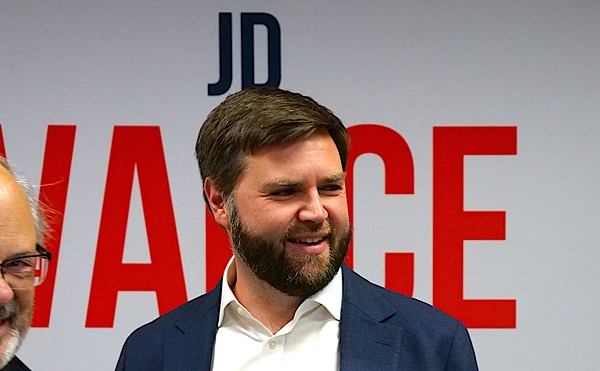For anyone who visits The Banks’ Web site, it appears the $800 million taxpayer-funded project along Cincinnati’s downtown riverfront is progressing smoothly, on schedule and under budget.
What the flashy Web site fails to mention, however, is the ongoing saga of workforce-related issues that have plagued the project since construction began in April 2008.
The project’s homepage slogan, “action is happening,” paints an optimistic portrait of the progress, but it omits any information on the action being taken behind the scenes by Hamilton County Commissioner Todd Portune and the AMOS Project to implement a local hiring policy for taxpayer-funded projects like The Banks.
“We’ve been working on (increasing) local hiring through tax-funded projects for quite some time, going back to 2007,” says the Rev. Gregory Chandler, AMOS Project president and senior pastor at World Outreach Christian Church in Clifton Heights.
“We’re trying to get local people hired at local jobs, because if you look at the individuals who are most often shut out of good paying jobs, you will find that they’re usually faced with obstacles,” Chandler adds. “This issue needs to be addressed so that the playing field can be leveled for everyone.”
The AMOS Project — a Tristate coalition of 30 churches committed to promoting social justice and reducing poverty — commissioned a payroll analysis of The Banks project’s workers in October, following what it termed a questionable report issued last summer by the project’s economic inclusion consultant, Ellington Management Services.
The AMOS payroll analysis was conducted by the Kirwan Institute of the Study of Race and Ethnicity at Ohio State University. Results show that nearly 80 percent of Banks workers are from outside Hamilton County and Cincinnati residents hold only six percent of these jobs.
The findings drastically differ from the data released by Ellington, which showed project workforce goals were being met almost perfectly.
The results of Kirwan’s payroll analysis prompted the AMOS Project and Portune to push even harder for a local hiring policy that would secure a greater percentage of jobs for Hamilton County residents on taxpayer-funded projects in the area.
“I have been pushing for a local hiring policy dating back to my first year as president of the (commission) in 2001,” Portune says.
At that time, Portune proposed amending the county’s contract bidding policies with a process that allowed the county to gauge bids on taxpayer-funded projects based upon multiple criteria including the location of the company; the location of its employees and those it intended to hire; the location of vendors the company did business with; and what locale vendor employees lived in.
In addition, Portune proposed a provision that gave greater weight to bids based upon the socioeconomic condition of the census tracts involved in each of those criteria — the involvement of poorer neighborhoods, for example, would score higher.
But County Prosecutor Joe Deters rejected Portune’s proposal in 2007 — Deters’ memo claimed such a local hiring policy would be “legally impermissible.”
The Deters memo sparked controversy and ultimately posed the question of whether any Ohio county has the authority to create its own hiring policies for contracted work projects.
Searching for more details, the AMOS Project sought legal advice and retained Terry Brennan, who concluded that Hamilton County indisputably has the authority to do so.
“Counties in Ohio have a number of powers granted to them both in the Ohio Constitution and the Ohio Revised Code (ORC) that allow them the authority to implement local hiring requirements and engage in economic development,” Brennan says.
“Their authority to engage in economic development is under the condition that they do so in order to create job opportunities for local residents in the county, as it is laid out in the Ohio Revised Code.”
On March 16, Brennan sent a memo to Portune and his fellow county commissioners — Greg Hartmann and David Pepper — affirming his conclusions that the county indeed has the authority to adopt such a policy by referring to ORC section 307.07. The provision gives counties the power to “design, implement, monitor, oversee and evaluate economic development plans, programs, strategies and policies.”
Also, Brennan argues against the validity of the Deters memo, stating there is no convincing legal basis for the prosecutor’s conclusion, at least as it applies to local workforce requirements.
“(Deters) is either misreading or misinterpreting the law,” Brennan says. “His memo draws very rigid, unwarranted conclusions.”
Brennan’s legal investigation served as a significant impetus to continue the fight for a local hiring policy, according to Portune.
“Brennan’s memo breathed new life into this issue and motivated me to revisit it,” he says.
Portune is discussing the issue with representatives of the AMOS Project and plans to submit a draft policy to commissioners by late June.
In addition to the local hiring policy, Portune and the AMOS Project have pushed for a citywide “fair hiring” policy, which would ensure old or irrelevant convictions aren’t used to automatically block qualified individuals from municipal jobs with the city of Cincinnati.
Hamilton County commissioners unanimously adopted a similar fair hiring policy authored by Portune, but when AMOS and Portune urged the city to adopt this model city officials declined to follow their lead.
“It’s important for the city to make these changes because they can be used as a catalyst to help other project businesses in our community to take a similar stance with individuals who are being released back into the community,” Chandler says. “They need to have a reason to be hopeful, and now that they’ve paid their debts to society they can become reintegrated into society with meaningful work.”
He adds: “We’re hopeful that there will be adjustments made to hiring policies that just make things a little clearer.”





